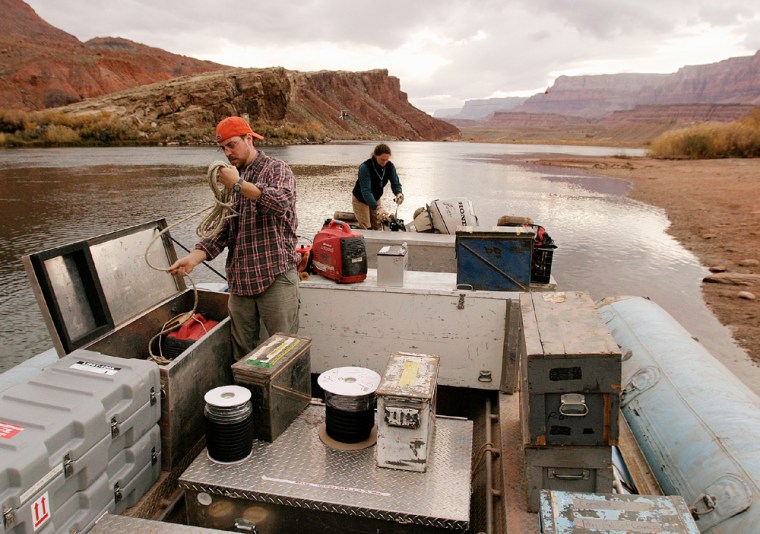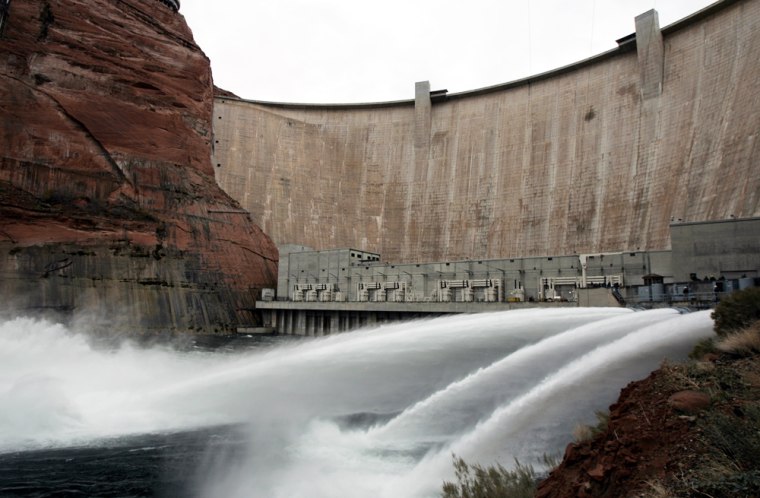As a torrent of water gushed from a dam’s four giant steel tubes, researchers rafted down the Colorado River on a trip aimed at restoring the Grand Canyon’s fragile ecosystem.
The water was released by the Bureau of Reclamation to try to redistribute 800,000 metric tons of sediment during a 90-hour run. The release, which began Sunday, will peak when 41,000 cubic feet of water rush throughout the Glen Canyon Dam every second.
“The sediment, sand, mud and silt play an important role in the ecosystem,” said Chip Groat, director of the U.S. Geological Survey. “Hopefully that three-day peak is enough to get the sediment over the sandbars, but not enough to erode it.”
Some 50 scientists will study the immediate effects on the canyon, including the group of researchers who began rafting down the river Sunday.
Learning from 1996 test
The Interior Department began studying the effects of the dam in the early 1980s, and discovered that beaches were washing away. In 1996, officials flooded the canyon with an 18-day water release. Only about five of those days, however, produced high floods.
Scientists had overestimated the sediment levels in the beds of the tributary rivers that pour into the river below the dam. Sediment redeposited by some of the flooding was only eroded away by other flood waters.
“This test is a refinement of the 1996 experiment. We learned we could do it with less water and more effectiveness,” said Nick Melcher, USGS district chief for water resources in Arizona. “How much sediment we can move, how stable it is and how long it will last are all ways we’ll measure success.”
Dam killed some fish species
The manmade dam, built 40 years ago upstream from the Grand Canyon, forever altered the landscape. Four of the canyon’s eight native fish species have disappeared and prospects for the fifth, the endangered humpback chub, are grim.

Before the Glen Canyon Dam’s construction, natural flooding built up backwaters, eddies and sandbars with silt distributed from the Colorado’s tributaries — landscape features within the river considered essential to native plant and fish species.
At the time, about 24 million metric tons of sediment were in the river, Groat said. Only about 7 percent of the sediment before the dam was built remains.
Some camp sites under water
This week’s controlled flooding will not change the annual water release into Lake Powell, but it was expected to drain the lake somewhat. And, rafters will notice a difference.
“Most places where people camp will be under water, so they’ll have to make camp on higher ground,” said Jeff Cross, director of Grand Canyon National Park’s science center.
Researchers will conduct 20 experiments during the test, including archaeological, biological and hydrological studies.
